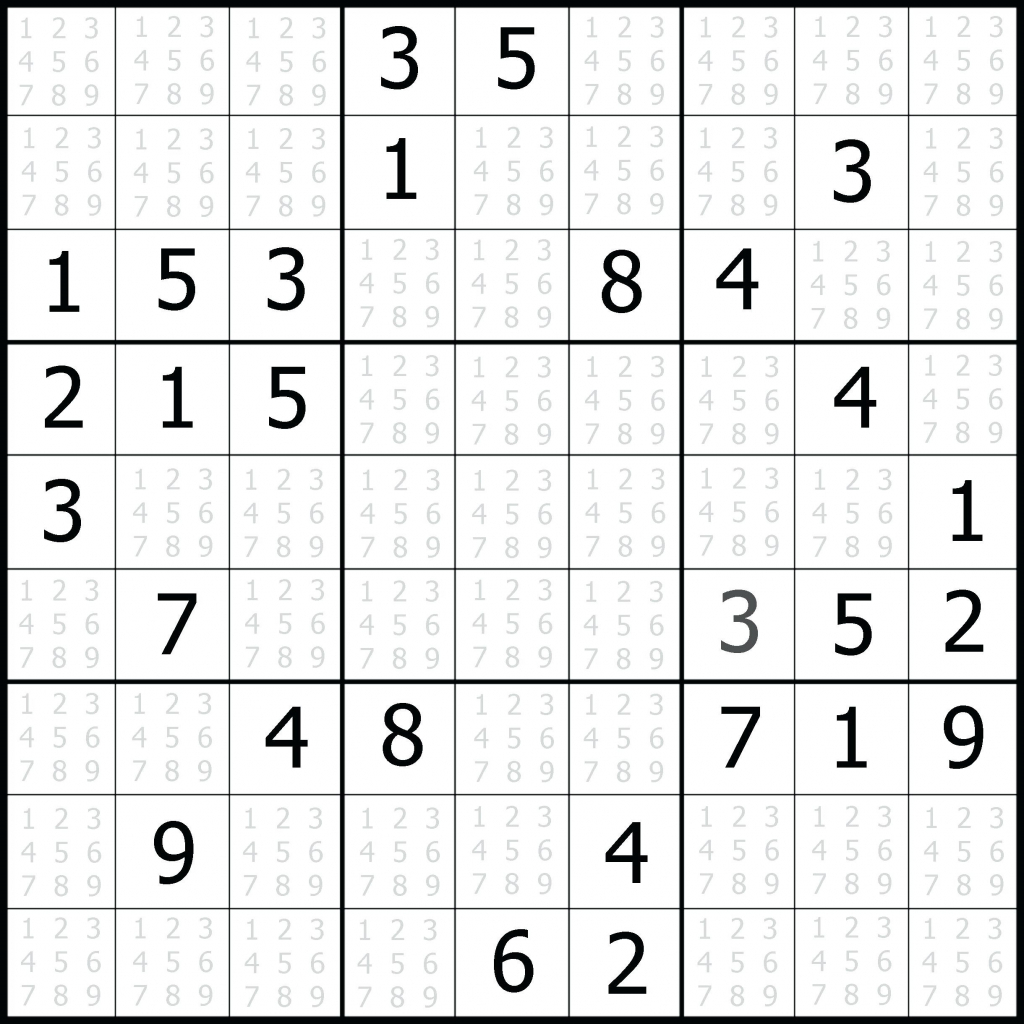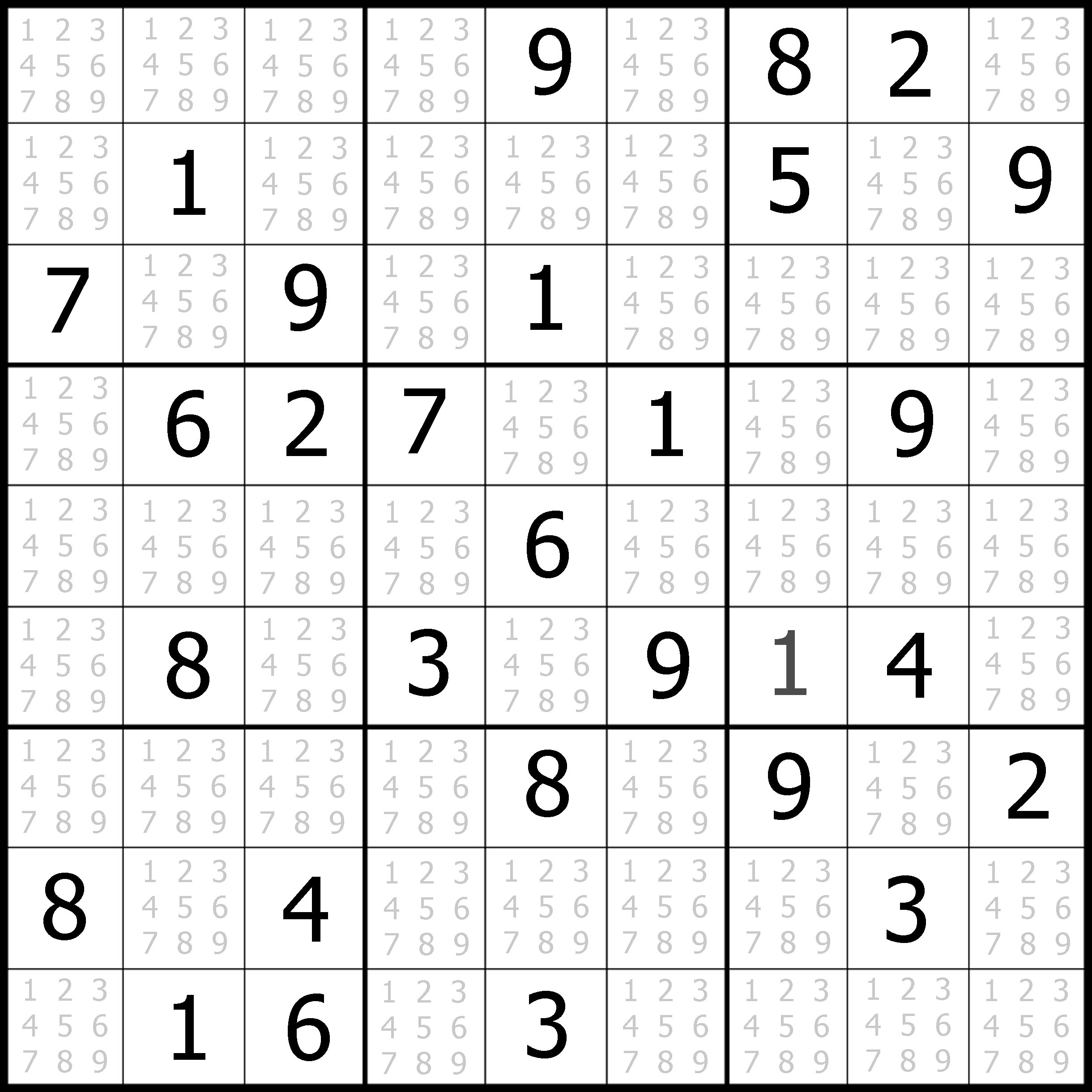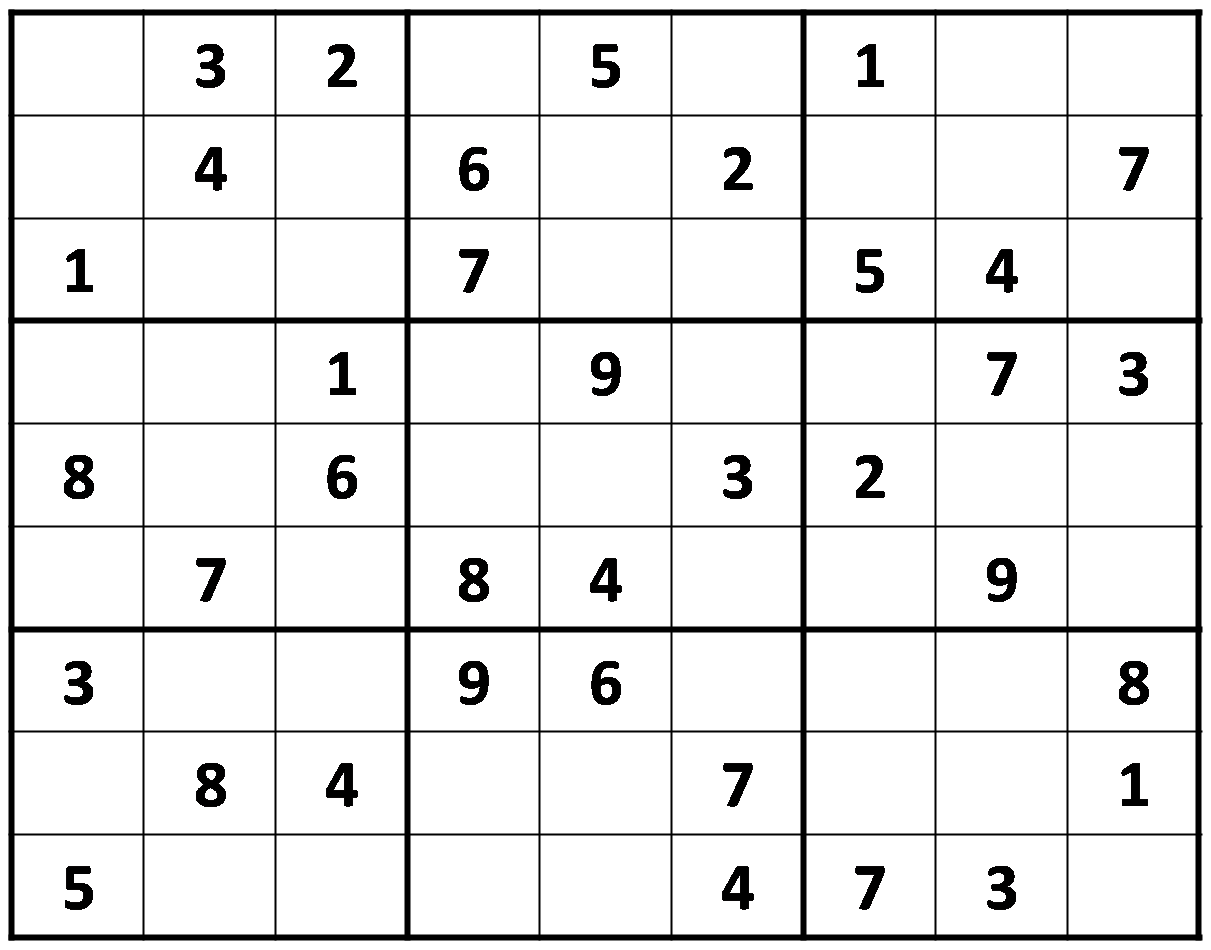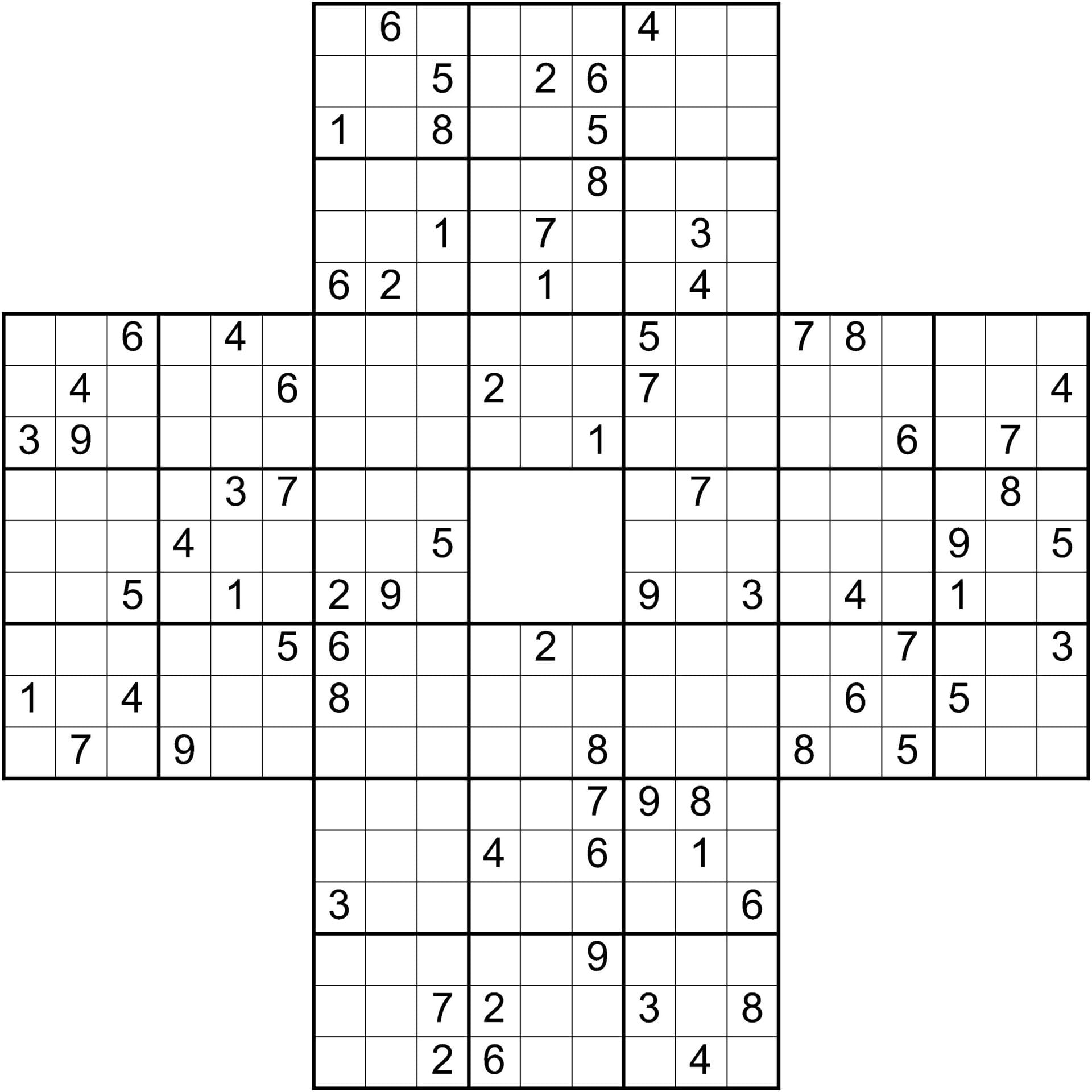Blank Sudoku Grids: A Fascinating Tool for Puzzle Enthusiasts
Get ready to dive into the world of blank sudoku grids, a key element in solving the popular number puzzle. In this guide, we will explore the structure, strategies, and variations of blank sudoku grids, as well as their benefits and available resources.
Whether you’re a beginner or an experienced solver, this comprehensive overview will equip you with the knowledge and skills to conquer any blank sudoku challenge. So, let’s embark on this exciting journey together!
Introduction to blank sudoku grids

A blank sudoku grid is a 9×9 grid that consists of empty cells. Each cell can be filled with a number from 1 to 9. The grid is divided into 9 smaller 3×3 grids, called boxes. The goal of solving a sudoku puzzle is to fill in all the empty cells with numbers, following certain rules.The
purpose of a blank sudoku grid is to provide a starting point for solving sudoku puzzles. It serves as a template where players can enter their answers and work through the logic and deduction required to solve the puzzle. The blank grid allows players to focus on the puzzle-solving process without being influenced by any initial numbers or clues.Blank
sudoku grids are used in various ways. They are commonly found in puzzle books, newspapers, and online sudoku platforms. Players can print out or access these blank grids to solve sudoku puzzles at their convenience. Additionally, blank grids are also used by puzzle creators and editors to design and generate new sudoku puzzles.
Examples of how blank sudoku grids are used
- As a starting point for solving a sudoku puzzle: Players can use a blank grid to begin the process of solving a sudoku puzzle by filling in the numbers based on logical reasoning and elimination.
- For practicing sudoku-solving techniques: Blank grids are also used for practicing different sudoku-solving techniques, such as crosshatching, box-line reduction, and candidate elimination.
- Designing new sudoku puzzles: Puzzle creators and editors use blank grids to design and generate new sudoku puzzles. They fill in certain cells with numbers to create unique puzzles with varying levels of difficulty.
Overall, blank sudoku grids play a crucial role in the world of sudoku, serving as a foundation for puzzle-solving and puzzle creation. They provide a blank canvas for players to engage in logical thinking, problem-solving, and the joy of unraveling the mysteries of sudoku puzzles.
Structure of a blank sudoku grid

A blank sudoku grid is composed of a 9×9 square grid, divided into smaller sections. Each section is further divided into 3×3 cells, resulting in a total of 81 cells in the grid.
Layout of a blank sudoku grid
The layout of a blank sudoku grid consists of rows and columns. There are 9 rows, labeled from A to I, and 9 columns, labeled from 1 to 9. The intersection of each row and column forms a cell in the grid.
Sections in a blank sudoku grid
A blank sudoku grid is divided into 9 sections, also known as boxes or blocks. These sections are Artikeld by thicker lines, creating a 3×3 grid within the larger 9×9 grid. Each section contains 9 cells.
Numbering system in a blank sudoku grid
The numbering system used in a blank sudoku grid follows the traditional Arabic numerals from 1 to 9. These numbers are used to fill the cells in the grid, with the objective of completing each row, column, and section with the numbers 1 to 9, without repetition.
Filling in a blank sudoku grid

Filling in a blank sudoku grid is the process of placing numbers in the empty cells of the grid according to certain rules and strategies. It requires logical thinking and problem-solving skills. In this section, we will explain the rules for filling in a blank sudoku grid, discuss strategies and techniques for solving it, and provide tips for beginners on how to approach filling in a blank sudoku grid.
Rules for filling in a blank sudoku grid
To fill in a blank sudoku grid, you need to follow these rules:
- Each row must contain all the digits from 1 to 9.
- Each column must contain all the digits from 1 to 9.
- Each 3×3 box must contain all the digits from 1 to 9.
- No digit can be repeated in a row, column, or 3×3 box.
These rules ensure that each number appears only once in each row, column, and box of the sudoku grid.
Strategies and techniques for solving a blank sudoku grid
There are several strategies and techniques that can be used to solve a blank sudoku grid. Here are some commonly used ones:
- Scanning: Start by scanning the grid for any obvious numbers that can be placed in certain cells. Look for rows, columns, or boxes where only one number is missing.
- Elimination: Use the process of elimination to narrow down the possible numbers for each cell. Look for numbers that cannot be placed in a certain row, column, or box based on the numbers already filled in.
- Intersection: Look for cells where the possible numbers intersect in a row, column, or box. If there is only one common number among the intersecting cells, it can be placed in that cell.
- Backtracking: If you reach a point where you cannot make any progress using the above strategies, you may need to backtrack and try different numbers in certain cells until you find a valid solution.
Using a combination of these strategies can help you solve even the most challenging sudoku grids.
Tips for beginners on how to approach filling in a blank sudoku grid
If you are a beginner, here are some tips to help you approach filling in a blank sudoku grid:
- Start with the easiest puzzles: Begin with sudoku puzzles that have fewer empty cells to fill in. This will help you grasp the basic strategies and build your confidence.
- Focus on one number at a time: Instead of trying to fill in all the numbers at once, focus on one number at a time. This will make the process more manageable and less overwhelming.
- Use pencil and eraser: It’s always a good idea to use a pencil and eraser when filling in a sudoku grid. This allows you to make mistakes and correct them without creating a mess.
- Practice regularly: Sudoku is a skill that improves with practice. Try to solve sudoku puzzles regularly to enhance your problem-solving abilities and become more comfortable with the strategies.
Remember, solving sudoku is a journey that requires patience and persistence. Don’t get discouraged if you encounter difficulties along the way. With practice and experience, you’ll become better at filling in blank sudoku grids.
Variations of blank sudoku grids
Blank sudoku grids come in various variations, including different sizes and shapes. These variations can have an impact on the solving process and provide unique challenges for sudoku enthusiasts.
Size variations
One of the most common variations of blank sudoku grids is the size. Although the standard sudoku grid consists of a 9×9 square grid divided into nine 3×3 subgrids, there are variations with different sizes. For example:
- A smaller grid, such as 6×6, which consists of six 2×3 subgrids.
- A larger grid, such as 12×12, which consists of twelve 3×4 subgrids.
These size variations provide a different number of cells to fill in and can require different strategies to solve. Smaller grids may be easier to solve due to the reduced complexity, while larger grids can offer a more challenging experience.
Shape variations
In addition to size, blank sudoku grids can also have different shapes. While the standard sudoku grid is a square, there are variations with non-square shapes. For example:
- A rectangular grid, such as 9×6, which consists of nine 2×6 subgrids.
- An irregular-shaped grid, where the subgrids do not follow a uniform pattern.
These shape variations add an extra layer of complexity to the solving process. Irregular-shaped grids may require additional deduction techniques to identify the relationships between the cells and subgrids.
Examples of popular variations
There are several popular variations of blank sudoku grids that have gained popularity among sudoku enthusiasts:
- X-Sudoku: This variation includes two additional diagonals that must also contain unique numbers.
- Hyper-Sudoku: In this variation, the grid is divided into four additional 3×3 subgrids, resulting in a 12×12 grid.
- Killer Sudoku: Instead of having predefined numbers in some cells, this variation provides the sum of numbers within certain regions.
- Windoku: Also known as Four Square Sudoku, this variation uses a 4×4 grid and requires numbers to be unique within the four quadrants.
These variations offer unique solving experiences and require different strategies to solve. Sudoku enthusiasts often enjoy exploring these variations to challenge their problem-solving skills.
Benefits of using blank sudoku grids

Solving blank sudoku grids offers several cognitive benefits and can be a great exercise for the brain. It not only provides entertainment but also helps improve logical thinking and problem-solving skills.Sudoku requires players to analyze and think critically, which enhances their cognitive abilities.
By regularly engaging in solving blank sudoku grids, individuals can experience the following benefits:
Improved logical thinking
Solving blank sudoku grids involves applying logical reasoning and deduction skills. Players must analyze the given numbers and use deductive reasoning to determine the correct placement of the remaining numbers. This process trains the brain to think logically and enhances problem-solving abilities.
Enhanced problem-solving skills
Sudoku puzzles present complex problems that require a systematic approach to solve. By practicing solving blank sudoku grids, individuals develop effective problem-solving strategies such as breaking down complex puzzles into smaller, manageable parts. This skill can be transferred to other areas of life where problem-solving is necessary.
Increased concentration and focus
Solving blank sudoku grids requires concentration and focus. Players must pay attention to the numbers already placed on the grid and carefully consider the possible placements for the remaining numbers. Regularly engaging in sudoku puzzles can improve concentration and focus, which can be beneficial in various aspects of life, such as work or academics.
Stress relief and relaxation
Engaging in activities that challenge the brain, like solving blank sudoku grids, can provide a sense of relaxation and stress relief. Focusing on the puzzle helps divert attention from daily stressors and promotes a state of mindfulness.
Enhanced memory and cognitive function, Blank sudoku grid
Sudoku puzzles require players to remember and recall numbers, patterns, and strategies. Regularly solving blank sudoku grids can improve memory retention and enhance overall cognitive function.Solving blank sudoku grids not only offers cognitive benefits but also provides a form of entertainment that can be enjoyed by people of all ages.
Whether it is during leisure time, while commuting, or as a mental exercise, the benefits of using blank sudoku grids extend beyond the puzzle itself.
Resources for blank sudoku grids

Sudoku enthusiasts have several options when it comes to finding blank sudoku grids. Whether you prefer physical copies or digital versions, there are various sources available to cater to your needs.
Books
One of the most traditional ways to access blank sudoku grids is through books dedicated to the puzzle. Many puzzle books, specifically Sudoku books, contain sections with empty grids for users to fill in. These books can be found in bookstores or online platforms that sell books, such as Amazon or Barnes & Noble.
Websites
The internet offers a vast array of websites where you can find printable blank sudoku grids. Sudoku-focused websites often provide downloadable and printable grids in various sizes and difficulties. Some popular websites include Sudoku Kingdom, Sudoku.com, and PrintableSudokuGrids.com. These websites allow you to choose the size and difficulty level of the grids according to your preference.
Online Puzzle Generators
In addition to websites that provide pre-made blank sudoku grids, there are also online puzzle generators available. These generators allow you to customize the size, difficulty, and even the design of the grid. You can find such generators on websites like SudokuWiki.org
and SudokuPuzzleGenerator.com. These tools provide a convenient way to generate and print personalized blank sudoku grids.
Mobile Applications
For those who prefer solving puzzles on their smartphones or tablets, there are numerous sudoku apps available. Many of these apps not only offer pre-filled sudoku puzzles but also provide the option to create and solve blank grids. Some popular sudoku apps include Sudoku.com,
Sudoku Free, and Sudoku Joy.
Additional Tools
Apart from books, websites, and mobile apps, there are other resources and tools that can aid in solving blank sudoku grids. Puzzle magazines often feature blank grids for readers to fill in, and some even provide solving tips and strategies.
Online forums and communities dedicated to sudoku can also be valuable resources, where enthusiasts share their own blank grids or discuss solving techniques.With the availability of these resources, sudoku enthusiasts can easily find and access blank grids to enjoy the challenge of solving sudoku puzzles.
Expert Answers
What is a blank sudoku grid?
A blank sudoku grid is an empty 9×9 grid divided into smaller 3×3 sections, used as the starting point for solving sudoku puzzles. It consists of cells that need to be filled with numbers from 1 to 9, following specific rules and strategies.
How do I fill in a blank sudoku grid?
To fill in a blank sudoku grid, you must follow the rules of sudoku. Each row, column, and 3×3 section should contain all numbers from 1 to 9 without repetition. Start by analyzing the given clues, and use logical reasoning to determine the correct numbers for each cell.
Are there different variations of blank sudoku grids?
Yes, there are various variations of blank sudoku grids. These variations include different grid sizes, such as 4×4 or 6×6, as well as unique shapes like irregular or diagonal grids. Each variation adds an extra layer of challenge and requires different solving techniques.
Where can I find blank sudoku grids?
Blank sudoku grids can be found in puzzle books, online websites, and mobile applications dedicated to sudoku puzzles. Additionally, you can easily find printable blank sudoku grids that you can print and solve at your convenience.
How can solving blank sudoku grids benefit me?
Solving blank sudoku grids offers numerous cognitive benefits. It improves logical thinking, problem-solving skills, concentration, and memory. By challenging your brain with sudoku puzzles, you can enhance your overall mental agility and enjoy a fun and rewarding pastime.